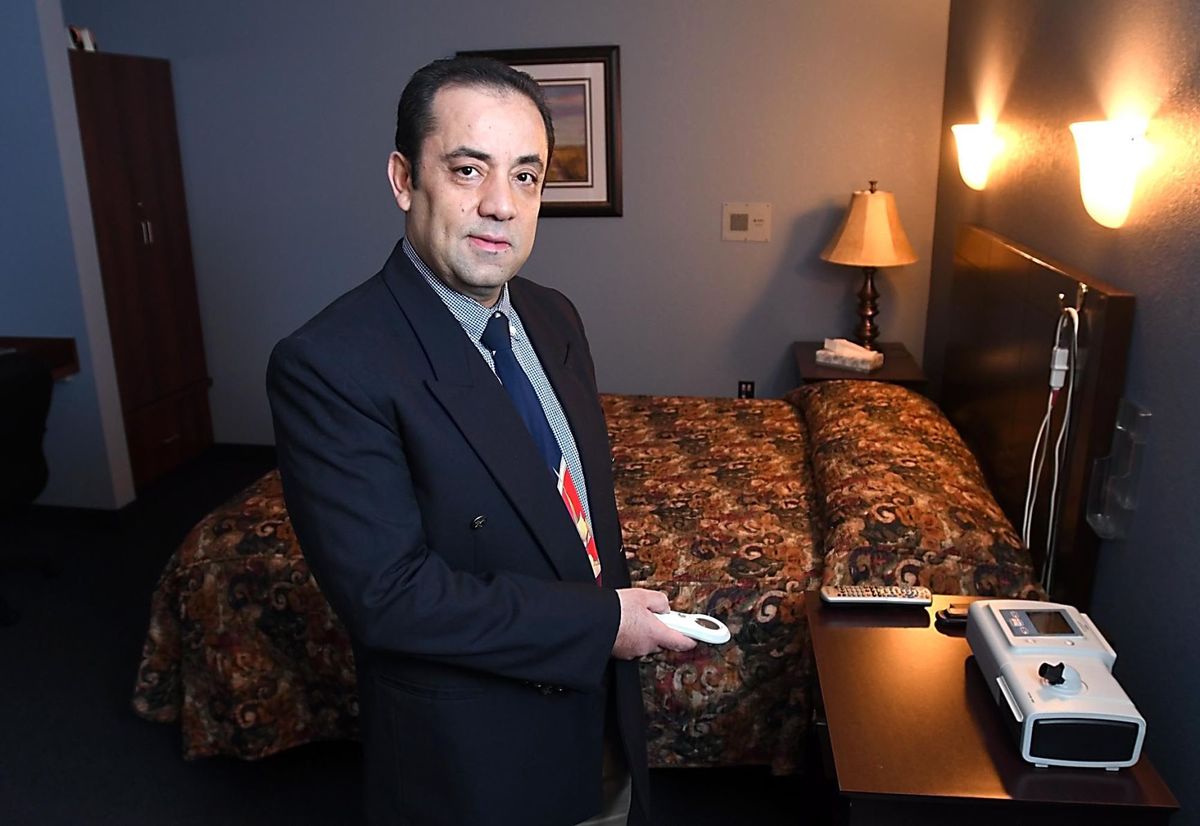Neurologist: Sleep disorders can mean health issues
By Amanda Dyslin Special to The Free Press | Mar 12, 2017

MANKATO — Ideally, people should spend one-third of their lives sleeping, said Dr. Nidal Alkurdy, a Mankato Clinic neurologist and sleep specialist.
“Sleep is a very important component in the health of the brain,” Alkurdy said. “You cannot have a healthy brain in a person who is not sleeping healthy.”
Major advances in sleep science occurred in the mid-20th century after the discovery of rapid eye movement, or REM, sleep in 1953. But the focus on evaluation and management of sleep disorders have only developed in the past two or three decades.
“Lately there has been more emphasis and more resources, and more fellowships have become available,” Alkurdy said.
Alkurdy attended medical school at Damascus University in Syria and completed his neurology residency at the University of Illinois Chicago. He completed a fellowship in clinical neurophysiology at Brown University in Providence, Rhode Island.
Alkurdy has been working in the field of sleep medicine for the past several years. He said the field of neurology and sleep medicine are closely related, as sleep disorders have direct effects on the brain and vice versa.
“(Sleep medicine) is something that touches the lives of everybody,” he said. “It is intriguing. It is interesting.”
The field has come far in its understanding of the mechanism of sleep and sleep disorders, Alkurdy said. Public outreach and education on the importance of healthy sleep and the negative effects of sleep disorders on health has helped draw attention to sleep medicine in recent years. On a recent Thursday morning alone four patients were waking from a night of sleep observation at J. Scott Sanders Center for Sleep Medicine in Mankato.
Sleep apnea is the most common sleep disorder diagnosed at Mankato Clinic’s sleep laboratory, Alkurdy said. Sleep apnea occurs when a patient stops breathing for 10 seconds or longer.
Some patients don’t stop breathing, but rather experience shallow breathing for 10 seconds or longer, which causes a drop in the oxygen level of the blood. This condition is called hypopnea.
“(Untreated sleep apnea patients) are more likely to get sick and to be unhealthy,” Alkurdy said, adding that long-term effects can be an increased risk of diabetes, hypertension, strokes, weight gain, infections and other complications.
Sleep disorders also can have negative emotional and psychological effects, Alkurdy said.
Obesity is a major risk factor for sleep apnea, due to the presence of excess fat that would narrow the airway in the back of the mouth and increase the risk for obstructions during sleep when the pharyngeal muscles are relaxed.
Warning signs of sleep apnea include not experiencing the feeling of a “refreshing sleep,” even if the person thinks they slept eight hours. Fragmented sleep, or waking up various times during the night, may also be an indication of the disorder. Bed partners can help alert their significant others to sleep disorders by noticing snoring or halts in breathing patterns.
When a patient is seen by a sleep specialist, he or she is given a full exam and evaluated for symptoms, warning signs and risk factors. The patient may then be referred to the sleep lab for an overnight sleep study.
Electrodes are wired to the patient to monitor brain and heart activity, eye movement, snoring, limb movements and, of course, breathing, among other things. A sleep technician watches the patient via camera in his or her assigned bedroom at the sleep lab.
If sleep apnea is diagnosed, a continuous positive airway pressure or CPAP machine or a bilevel positive airway pressure or BiPAP machine are widely prescribed. The patient sleeps with a mask attached to the machine, which increases the air pressure in his or her throat so it doesn’t collapse when breathing during sleep.
“Some patients might feel anxious at first, especially claustrophobic patients,” Alkurdy said. “But once they get acquainted, they often become religious about (using it).”
Sara Winnett of St. Peter is one of those people who uses her CPAP nightly. She takes it on vacation and even camping.
“It’s my best friend at night,” she said. “If I don’t have it, I feel like something is missing.”
Winnett had her sleep study done in 2011 at the J. Scott Sanders Center for Sleep Medicine because even when she slept for nine hours or more, she was always tired. The sleep study revealed she had sleep apnea.
“I stopped breathing more than 30 times in one hour,” said Winnett, who said her weight played a role in her sleep disorder.
After her diagnosis, Winnett said she was relieved to finally understand why she was so tired all the time. At first she was concerned about having to sleep with a CPAP for the rest of her life, but she has come to terms with it.
Even after losing more than 100 pounds, Winnett said her anatomy still is conducive to sleep apnea.
“You get used to the feeling of it,” she said. “Now I am able to be way more focused during my day.”
Alkurdy said while sleep apnea is the most common sleep disorder he sees in his practice, there are various others. Some people suffer from chronic insomnia; narcolepsy; restless leg syndrome; and idiopathic hypersomnia (a sleep disorder characterized by excessive daytime sleepiness).
But even those without a sleep disorder should be mindful of getting a good night’s rest.
Alkurdy said healthy sleep tips include: going to bed and waking up at the same time every day; limiting caffeine and other stimulants; avoiding heavy exercise, meals and snacking four hours before bed; and keeping television and other screens out of the bedroom.




